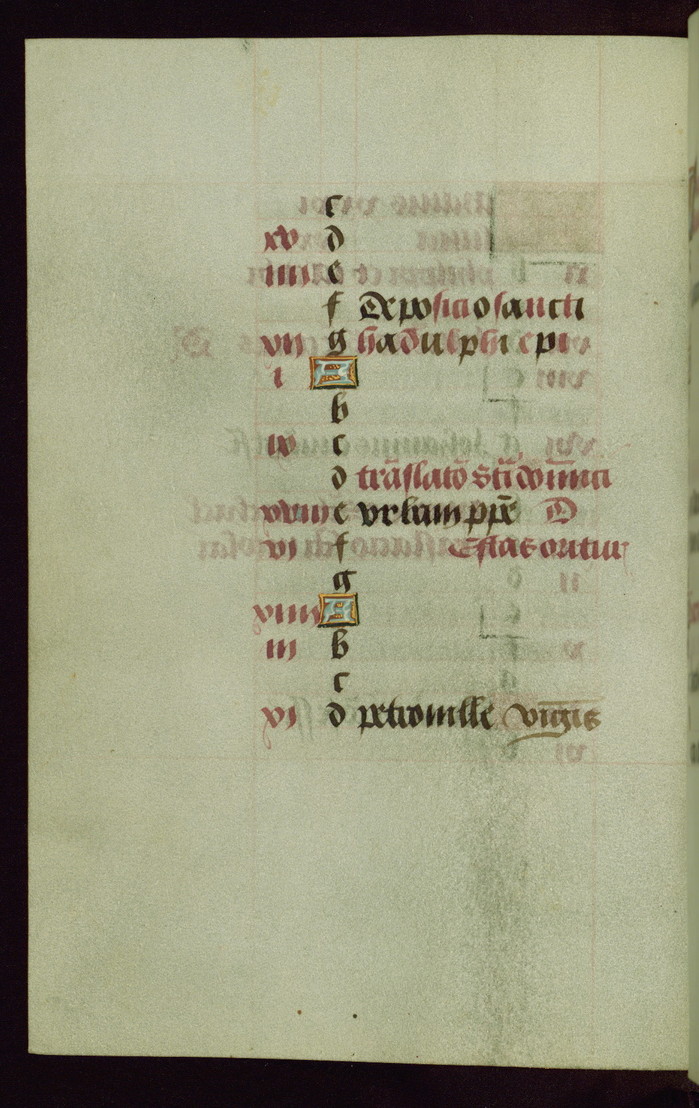Morgan Library M.361 is one more of the Italian books of hours, this one from Florence. The calendar is sparse, perhaps the least populated calendar I've seen so far, with only 118 entries. The entries are a perfect case study for localizing a calendar though. Most of the entries are the extremely common ones, Apostles, life of Mary, Jesus and John the Baptist, etc. There are 3 hapex saints, however, in early summer:
- May 25 - St. Zenobius, bishop
- June 6 - St. Alexandrus, bishop
- July 6 - St. Romulus, bishop and martyr
Of these the first is localized to Florence (Zenobius is regarded as the first bishop of Florence) and the other two to Fiesole, 5 miles from Florence proper.
(DB Id: 171)
Morgan Library M.56 is a tiny northern Italian Book from the second half of the 15th century. The hours are illuminated in the somewhat florid late Italian Gothic, but the calendar is quite plain, with just a simple blue KL at the start of each month. The saints represent the usual ones, with some specifically Italian additions. There are also two oddities, both the entry for Feb 25 (St. Constantine) and for May 13 (Pope Theodore) list them as Virgins, rather than bishops or popes. It is possible that other saints are meant, but I was unable to find a reference anywhere to a female saint on either date. Interestingly M.14 (DB Id: 164) also includes Pope Theodore, listed as a Virgin.
(DB Id: 109)
Some more from the Morgan Library, I was able to work through 13 books in 2 days, though M.1172, despite being lovely, is without a calendar. The first added, M.1052, is from Naples, as testified to by several saints in the calendar as "neapli" (See Severi, April 30 or Eusebius, May 23). A colophon on f.190r dates it to 1483, "finis. M.cccc..lxxxiii. die xi mensis.Marcii". The calendar is unusual in its population, a large number of high-importance feasts in an otherwise sparse calendar: 70 red saints, 50% of the populated dates. One would expect between 30 and 50 saints in a normal Italian calendar of approximately 200.
The manuscript is in a poor state of preservation, the binding is split and there is much evidence of water damage. In the calendar the red text has bled, whereas the black text has flaked. Although there is no available image of the calendar pages, f.13r has the annunciation, a jeweled border and a small block of text, giving a feeling for the book. The entire composition is surrounded by a "shredded" blue border.
(DB ID: 178)
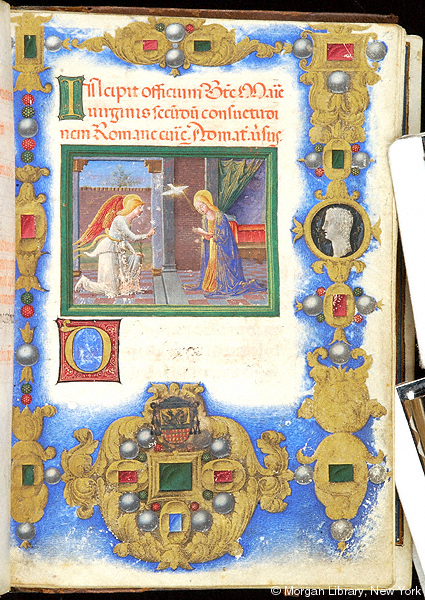
I'm not 100% sure I have all of the metadata accurately transcribed, because the University of Barcelona's website seems to be principly in Catalan, but MS 1841 seems to be a Spanish in origin (maybe around Toledo) Book of Hours from roughly 1480-1520, use undetermined. The manuscript is nicely executed, with outer-edge borders on most pages and full borders and large historiated initials to start most sections. The calendar, however, is a mess. I've not yet written the "visualizing errors" code, but this is the most error-filled calendar I've seen yet. Out of 218 identifiable saints, 44 seem to have incorrect dates, that is roughly 20%. Of these, several are major feasts, such as the Apostle Barnabas or Mark the Evangelist. There's even an extremely rare example of a saint in the wrong date, King Sigismund (May 1) is listed on April 30 (see f.4v below)
(DB ID: 116)
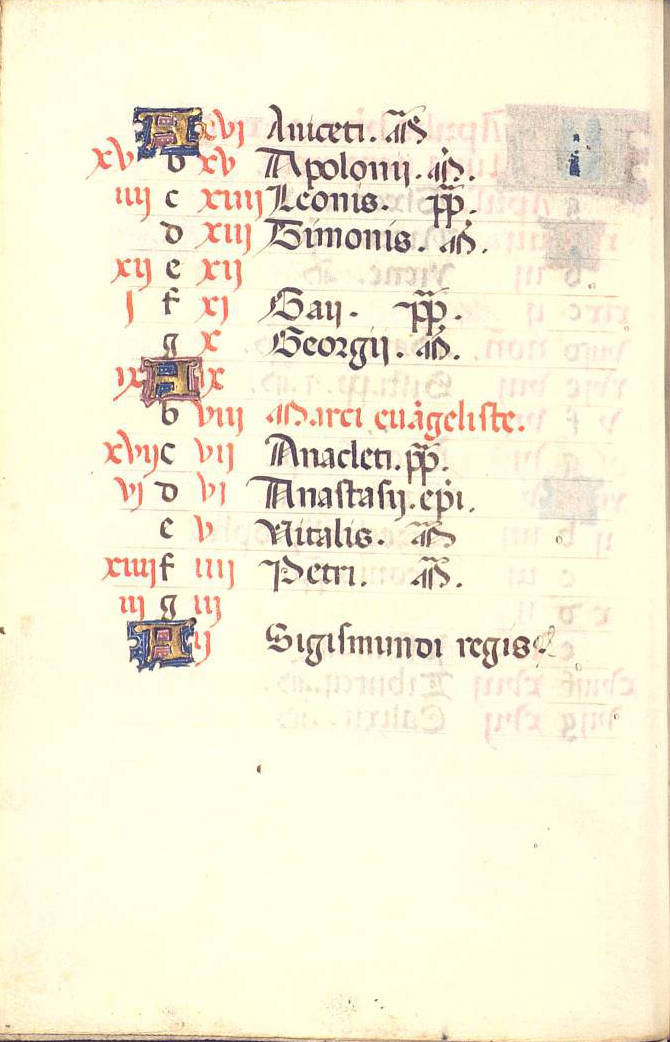
The Barberini Hours was made in Rouen approximately in 1510 and is another Book recently added from the Biblioteca Apostolica Vaticana, shelfmark Barb.lat.487. The illuminations in the book are attributed to Jean Pichore. The calendar has one month per face, and is sparsely filled, with only 165 entries. Many of the Rouen-specific saints appear in the calendar, including the Translation of St. Audoenus (Ouen), on May 5th (See f.3r below).
(DB ID: 161)
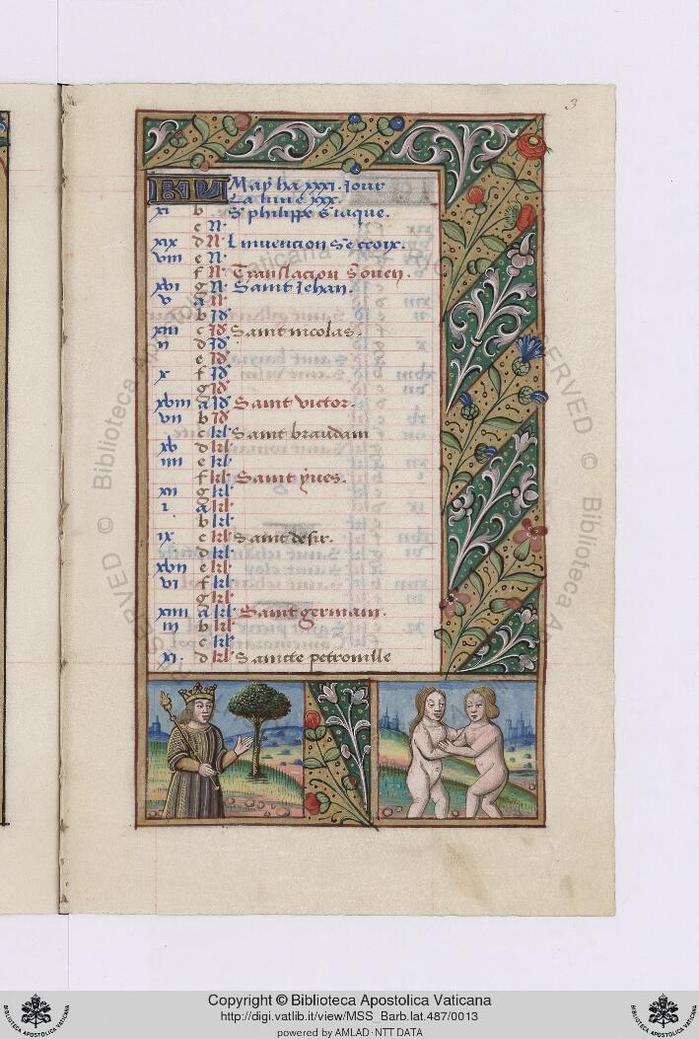
Harvard's Houghton Library MS Typ 553 is a weird Use of Rome Book from the late 15th century, only localized to "Northern Italy". The calendar is unevenly populated, 5 saints in March compared to 20 in January, and has a very large proportion of "high" importance (red) names, more even then normal rank saints. In addition to the usual saints, there are also most of the zodiac signs indicated as well as some here to for yet unidentified liturgical indications(see line 12 in May, f3r below). The scribal work is also unusual, there is no horizontal ruling at all, so the saints are often not alligned with the date information.
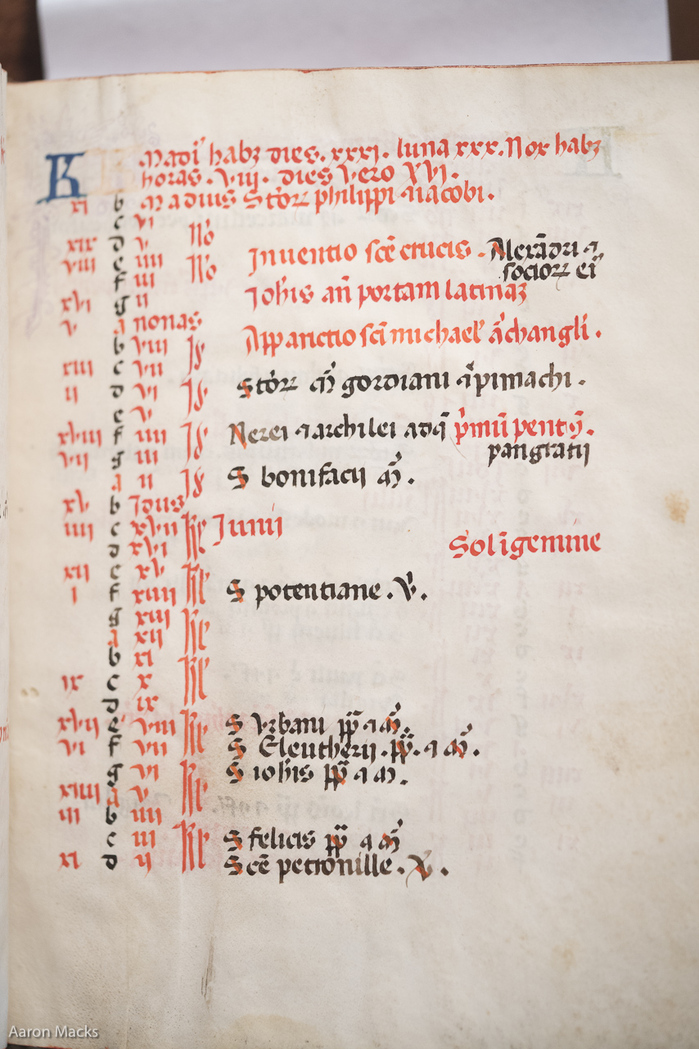
There’s no proper shelfmark but with only a few MS, Memorial University of Newfoundland can be forgiven. This Premonstratensian Book is dated to circa 1500 and unusually the name of the unusually female illuminator is known, Cornelia van Wulfschkercke (d. 1540), a nun of the calced Carmelite convent of Sion in Bruges. The calendar is not very well populated, with only 131 days populated. There is a rather interesting scribal error between April and May. April is only given 29 days, ending with the dominical letter ‘g’. May starts with ‘a’ and has both 32 days and all the saint matching their dominical letter. It appears that either the scribe realized their error and intentionally added April 30 as the first line of May, or simply blindly copied on, allowing the 2 errors to cancel each other out.
From the beginning there has been a color table in the db which links to color and secondary color names in the calendar_entries table, and provides the color names to be used in the HTML code. There has always been the relevant css data, both the generic color "code" (i.e. #444444 for medium gray) as well as any custom html, such as this, needed for the red-strikethrough sometimes used to indicate medium importance
.black-redline{
color: #000000;
text-decoration: line-through;
-moz-text-decoration-color: red; /* Code for Firefox */
text-decoration-color: red;
}
Although this css code has always been stored in the database, until some work this week the actual css had always been maintained by hand. When a new color was added to the DB, it was manually added to the .css at the same time. This has finally been rectified, a generate_css.pl script and matching colors.tt template have been added and will properly generate the .css at any time to match the DB. Eventually this may be called dynamically from the html code, but for now, manual intervention is needed to regenerate the colors, but at least it's just running a script
Not much is included about this book in the online catalogue, or even the usually-reliable James catalogue. The total information provided boils down to "French, 15th C". Even though the coat of arms on the cover is recognized as that of Anne of Austria, Queen of Louis XIII, that's too late of a date to help localize the manuscript
The calendar is most unusualm and error-filled. It is essentially a Parisian "complete" calendar, with one name per day, except May 12 which the scribe skipped. The color pattern is unusual, two reds and 2 blues rather than the usual alternation. An example of the oddities is seen on the second half of September where Cosmos and Damian, the paired doctor saints are seperated, with Damian being demoted to the 28th.
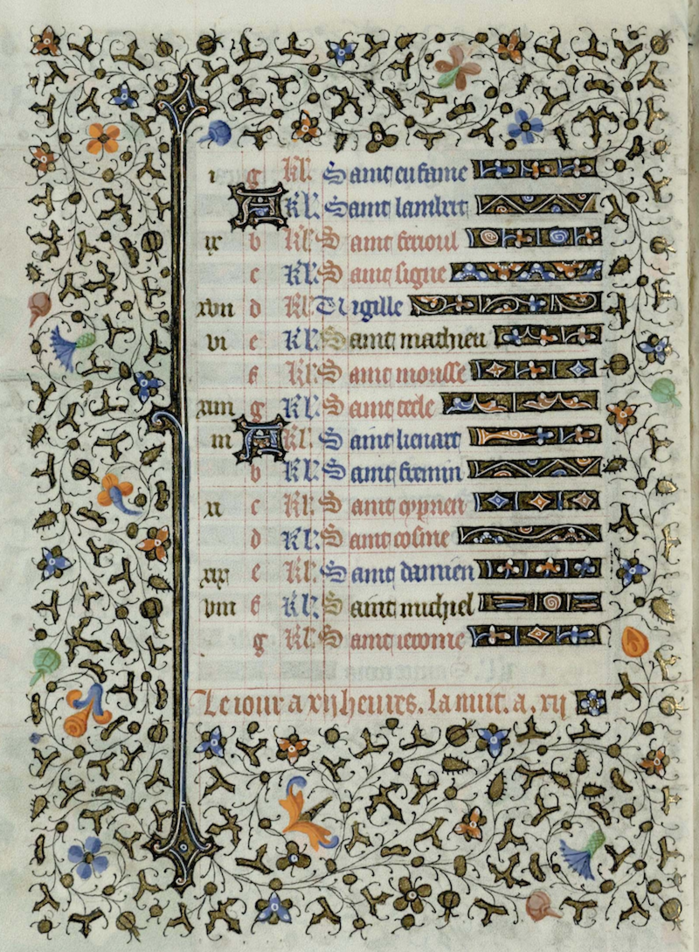
Walters MS W.439 is a late 15th Century Book from Ghent, usage unknown, with a severly underpopulated calendar, it contains only 132 entries. The unusual saint included is Saint Hadulphi (Bishop), who is unidentified as of yet. His deposition is May 19th(see red-black alternating letters below, f.5v) and his translation is August 31.
